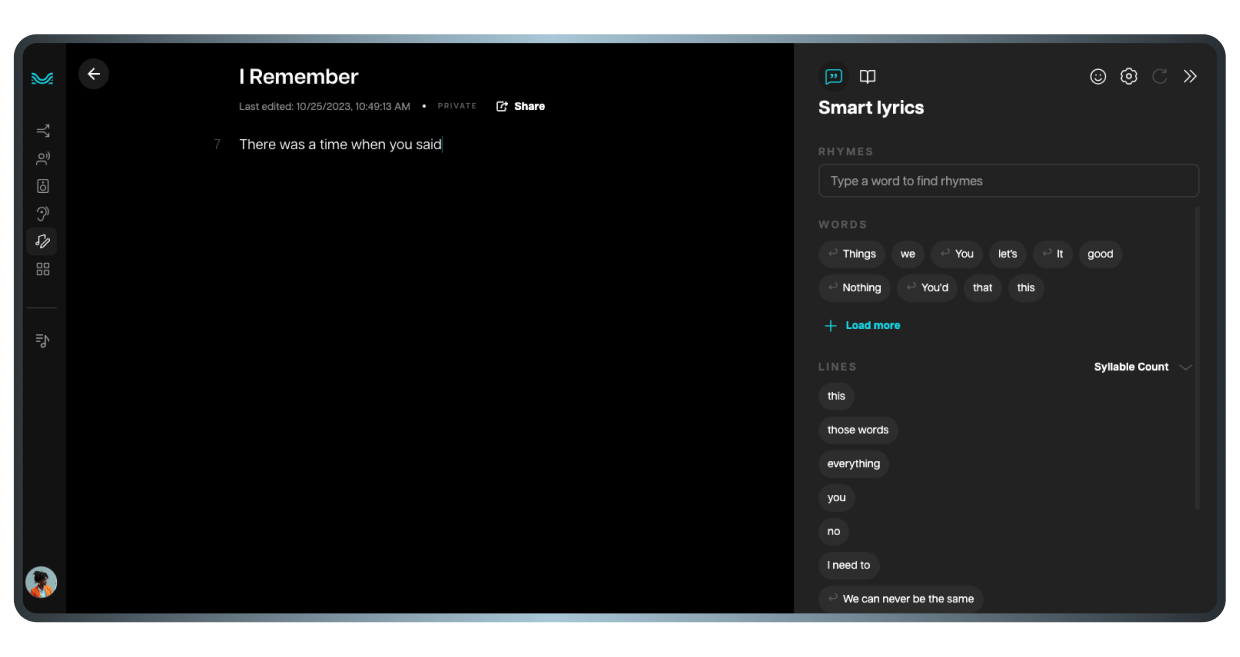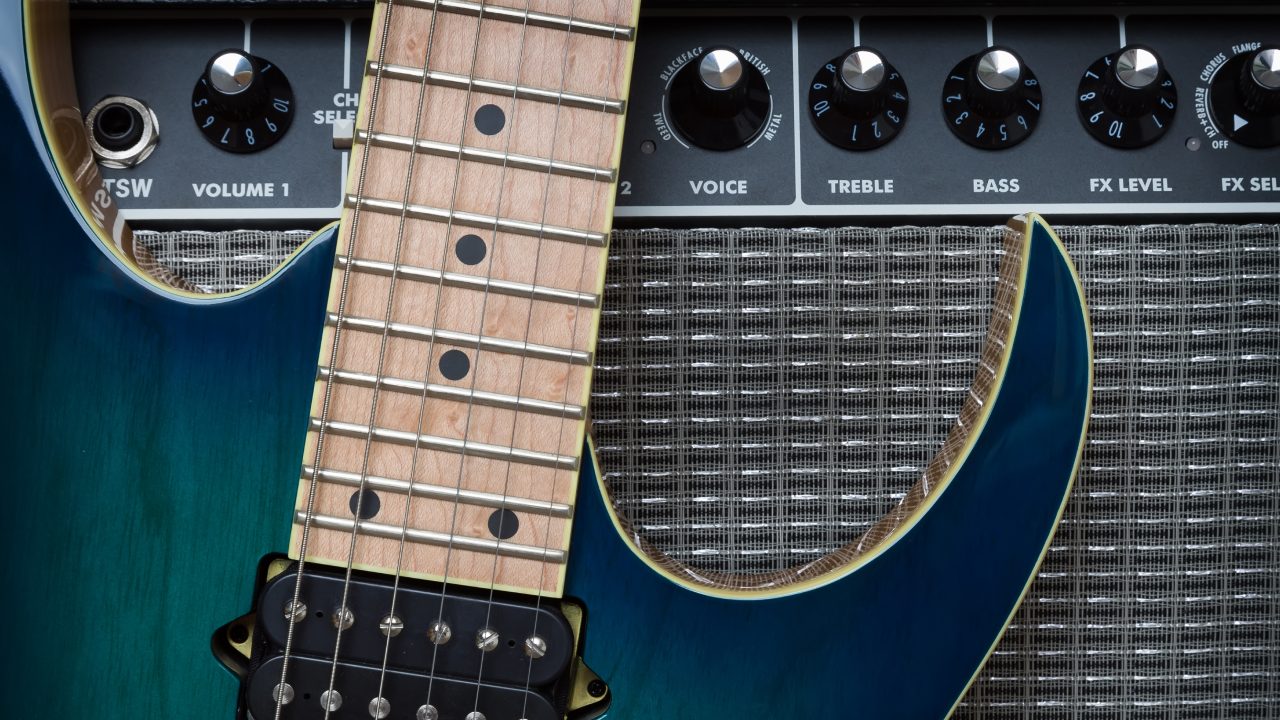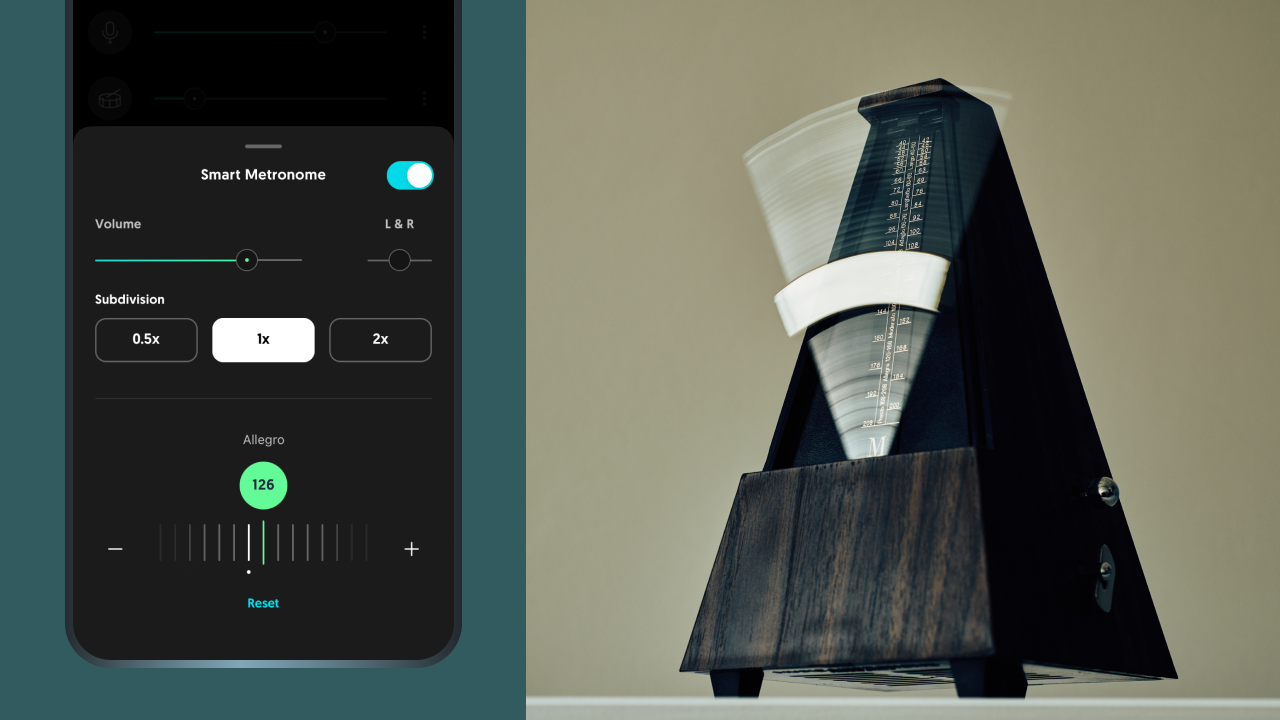Figuring out how to write a song can feel like staring at a blank canvas. For beginners, it’s exciting but a little daunting as well. For seasoned or professional songwriters who feel uninspired, it can be very frustrating. But either way, the right tools and mindset can get you in the zone.
Crafting lyrics and melodies that resonate with listeners is about tapping into your emotions, experiences, and imagination. It may also involve a lot of experimentation — or even teaming up with AI and using songwriting tools.
This content will guide you through the steps and nuances of songwriting besides introducing a tool that can spark your songwriting flow. Now, let’s get started!
How to write a song from scratch
There are many ways songwriters start their creative process — that is, there are no official rule books on how to write a song.
For some, inspiration for lyrics strikes suddenly. Meanwhile, others have spontaneous melody ideas and build from there. If this happens, trust your instincts!
But if you’re feeling stuck, here are some simple steps for bringing out either your first song or your best songs…
1. Find inspiration
To find your creative spark, the first thing to try is tapping into your personal experiences and emotions. They’re a powerful source of inspiration.
You can also consider creative prompts or exercises to spark new ideas. For example:
- Write stream-of-consciousness, letting your thoughts flow freely. You can set a timer and write down as many words or phrases as possible;
- Experiment with different song structures or chord progressions to break out of familiar patterns;
- Take a walk and observe your surroundings, noting down any feelings or potential lyrics. Challenge yourself to see beauty in unexpected places;
- Use a random word generator to challenge yourself and spark unexpected ideas.
Additionally, listening to music is a great way to find inspiration. When you do that, analyze the lyrics, melodies, and nuances of different songs to fuel your creativity.
2. Choose a theme
A central theme gives your songwriting focus and direction. Some common themes are love, loss, and overcoming challenges. These are things people often relate to, but it’s important to make sure the theme resonates with you in the first place.
Think about the emotions you want to explore. What story do you want to tell? A clear message adds depth to your lyrics and helps you create a truly resonant song.
The best way to write a song is for it to be a natural and honest experience. Even if it was inspired by someone I know, making it real is the best way I know to write a song. (Alicia Keys)
3. Outline the song structure
Starting out with the song title should be an exception when it comes to how to write a song. More often than not, it comes naturally from the lyrics. What you do need to focus on is the song structure.
Breaking down the songwriting process makes it easier to tackle. When outlining your song, try structuring it with sections like verse, chorus, and instrumental breaks.
While you don't need to include every type of song section, verses and a chorus are nearly mandatory for songs with lyrics. Yet, art can’t be tamed, and some great songs can break the norm.
Next, find out the main song sections you can use.
The verses
Both verse lyrics and melody help your song tell a story. This key component sets the scene, introduces characters or themes, and builds up the emotional depth of the song.
The pre-chorus
The pre-chorus is a transitional section in a song that serves as a buildup. It creates anticipation and tension before the song’s climax, which is the chorus.
The chorus
A chorus is a repeated section that usually carries the main message or theme. It serves as the song’s focal point and often has a catchy hook that’s easy to remember.
The bridge
A bridge is a transition between two different parts of the song. Adding variety, it also serves as a breather from one or more dominant aspects of the song. Frequently, it’s found between the chorus and a new verse, or near the song’s end before the chorus comes back.
4. Writing the lyrics
For lyrics, it’s a good idea to choose words that create vivid images and strong emotions. Word choice makes a huge difference in helping listeners connect with your message.
Another aspect to notice is rhythm — yes, for words. Feel free to play with the natural flow of words, adding a musical element to your lyrics, even without a melody.
Rhyme with intent
If you're familiar with rhyming schemes, you have one more thing going for you. Here are some common ones in song lyrics:
- Alternate Rhyme (ABAB): Commonly used in songwriting, where every other line rhymes. Example:
The stars above are shining bright (A)
A nightingale begins to sing (B)
The silvery beams cast a gentle light (A)
As dreams take flight on whispered wings (B)
- Repeating Rhyme (AAAA): The same rhyme is repeated in each line. Example:
We danced all through the night (A)
In the soft and glowing light (A)
Everything felt so right (A)
Underneath the stars, so bright (A)
- Couplet (AA): Two consecutive lines that rhyme, creating a straightforward and memorable pattern. Example:
I'm walking down the street (A)
The rhythm of my heart is the beat (A)
- Irregular Rhyme Scheme: Songwriters may mix and match different rhyme schemes throughout a song. Example:
Verse 1:
The rain falls gently on the street (A)
Each drop a memory of when we'd meet (A)
Chorus:
In the silence of the pouring rain (B)
Our love, a melody, a sweet refrain (B)
5. Coming up with the melody
Melody structures are how music notes and phrases combine to make catchy and enjoyable tunes.
Many songs follow a verse-chorus structure, with different melodies for verse and chorus. The verse melody generally establishes the narrative, while the chorus melody is often more continuous and iconic.
Next are some key aspects when it comes to melodies.
Structure
Most songs use verses to build the story and a catchy chorus to deliver the main message.
Repetition
Repeating musical phrases makes your melody memorable — so do that, but with care.
Range and rhythm
Play with high and low notes. Experiment with the length of your phrases as well to create a dynamic feel.
Contour
Does your melody rise and fall? Changing its direction adds emotional depth.
Melody-lyrics coordination
See how well the melody and lyrics fit together, both in terms of metrics and how well they team up to convey what you want.
Pro tip: The best melodies usually feel natural to sing. Don't be afraid to experiment until you find something that truly resonates!
6. Arranging and refining your song
You’ve got the building blocks of how to write a song: inspiration, theme, structure, lyrics, and melodies. Now it’s time to make it shine!
Consider this stage as putting together a puzzle: each piece contributes to a satisfying whole.
Arrangements, chords, and so on
- Arrangement tips: Think about how the different sections of your song flow together. Does the energy build naturally towards the chorus, or would a pre-chorus help? Could a bridge add a refreshing change of pace?
- Chords and harmonies: Experiment with different chord progressions and see how they change the mood of your song. Even subtle tweaks in your harmonies can add emotional depth.
**Extra tip: If you don't play an instrument, no worries! Software and apps can help you explore arrangements and experiment with sounds.
Editing and revising
The first draft is rarely the best version; so step back and revisit the entire song with fresh ears and a well-rested mind. This can help you spot opportunities to improve.
When refining your song, ask yourself things like:
- Are your lyrics clear and impactful?
- Does the melody flow naturally?
- Does your arrangement keep the listener engaged?
Feel free to experiment and rewrite sections until they feel just right.
Remember: Not every song will be an absolute hit, and that’s okay! Songwriting is a journey. Keep writing, keep revising, and you’ll create better songs over time.
How can you overcome writer’s block as a songwriter?
Hitting a creative wall is many songwriters’ nightmare, but one that comes true way too often. To break through, you can try things like freewriting, changing your scenery, limiting distractions, revisiting special songs, or collaborating with someone. But have you ever considered teaming up with an AI-powered songwriter?

Moises Lyric Writer: free to use and always creative
Frequently, when you’re unsure of how to write a song, all it takes to start is a single line or a well-chosen word.
Moises’ Lyric Writer can help you find the missing pieces — or even take the lead in crafting entire verses. Think of it as a flexible songwriting partner, ready to support you at every stage of the creative process.
Here are different ways Lyric Writer can help you get over creative blocks:
- Expand your possibilities: Need a rhyme? Stuck on a phrase? Lyric Writer offers tailored suggestions, helping you discover fresh words and phrases to bring your ideas to life;
- Tap into your emotions: Choose the mood of your song and watch Lyric Writer suggest lines that work well for it;
- Never run out of options: Free users already get many helpful suggestions, but Premium and Pro users get the full power of unlimited AI assistance.
Your style, but with unexpected twists
Lyric Writer isn't just about getting suggestions. It’s mainly about finding the perfect words and mood to match your style and help you express yourself.
For instance, you can customize your experience by setting Lyric Writer’s creativity level:
- Low: Looking for a familiar starting point? Then, choose this setting to get conventional phrases and spark great ideas for pop songs.
- Medium: If you want a little twist, this is a good setting to explore more unique outcomes without going overboard.
- High: Feeling adventurous? Get truly unusual ideas and push your creative boundaries.
But there is way more to this feature. The mood options, in particular, are pretty interesting. Whether you’re channeling heartbreak, joy, rebellious energy, or even a touch of confusion, Lyric Writer adapts.
Some moods available are Spiritual, In Love, Angry, and Proud — among others that you should definitely see for yourself.
Now, here is a gift for you: song lyrics generated with Lyric Writer’s help about… Lyric Writer itself.
At the start of each line, you can check the active mood. Enjoy!
(Confused 🤔) Staring at a blank canvas
(Confused 🤔) Wondering where are all the colors have gone
(Sad 😔) Feels like I miss old stanzas
(Sad 😔) I miss lyrics that were never sung
(Spiritual 🙏) But I know hope isn't lost today
(Spiritual 🙏) Something puts me at ease
(Spiritual 🙏) Inspiration is only a few clicks away
(Spiritual 🙏) I am not far from my masterpiece
(Happy 😀) On a positive note, I end this content inception
(Happy 😀) I hope it has caused you a smile or two
(Happy 😀) Whenever you need some direction
(Happy 😀) AI is here for you
This is your sign to start songwriting now
In summary, crafting a good song takes creativity and a structured approach. Find inspiration, choose a theme that resonates with you, and outline your song with sections to get started.
But if you’re struggling with how to write a song, Moises’ Lyric Writer can be a game-changer. There is no wrong way to use it; so don’t be afraid to experiment with different settings and inputs. Let specialized AI take you to new creative heights.







